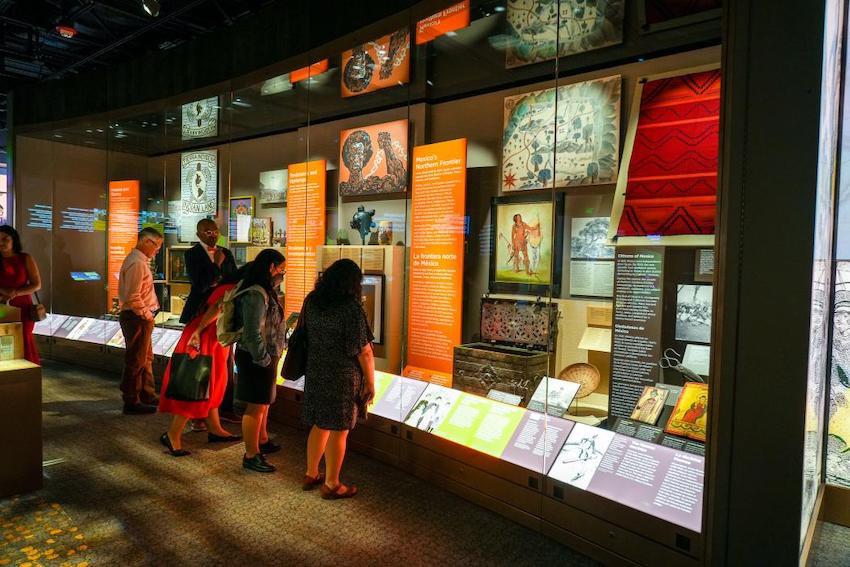Mexican-American cartoonist Felipe Galindo — known professionally as Feggo — is at the center of a growing storm over artistic freedom and government censorship after his work was singled out by the Trump administration as objectionable in a directive targeting Smithsonian museums.
Galindo’s 1999 illustration, “4th of July from the south border,” became a flashpoint when it appeared on a recent White House list of artworks being criticized for allegedly promoting, among other things: open borders, the concept of white privilege, a wide range of sexual identities, anti-American sentiment and too much focus on slavery in the history of the U.S.
View this post on Instagram
The administration’s campaign — the Aug. 21 document from the White was titled “President Trump Is Right About the Smithsonian” — comes amid increasing pressure on museums to “align messaging” with upcoming celebrations for the United States’s 250th anniversary.
Reacting from Manhattan, New York — where the 68-year-old native of Cuernavaca, Morelos, has lived for over four decades — the multiple-award-winning Galindo, whose work has appeared in The New Yorker and other publications, voiced alarm over censorship.
“More than fear, I feel sadness and anger, because what the Trump administration is doing is censorship and against freedom of expression,” Galindo said in an interview with the Mexican news magazine Proceso.
“This administration is racist. Even Trump said it at one point: ‘Why aren’t people from Norway coming here?’ He’s like that, absurd and racist. This administration is against anything that shows empathy and/or generosity toward Latin American immigrants and what everyone who seeks a ‘dream’ of a better life in this country experiences, the vast majority of whom work and contribute.”
On his website, Galindo has posted an explanatory letter in English. “Dear Friends and Amigos,” he wrote, “MAGA censorship is hitting home!” He also posted it on his Instagram account.
He said critics of the work, including The Federalist, a conservative publication, stated that the image is “promoting open borders by depicting migrants watching fireworks through an opening in the US-Mexico border wall.”
The illustration — which has been widely published and exhibited in both the U.S. and internationally over the past 26 years, and was recently displayed at the Smithsonian’s American History Museum in Washington, D.C. — is part of Galindo’s series “Manhatitlan: Mexican and American Cultures Intertwined.”
“It has received awards and it’s in many private and public collections, including the Library of Congress,” he added. “I am very proud of this work. I’m also a proud Mexican and American citizen.”

Moreover, the exhibition in which it was displayed, “¡Presente! A Latino History of the United States,” was closed down. Also shut down in July — four months ahead of schedule — was the Smithsonian’s Molina Family Latino Gallery, home to the nascent National Museum of the American Latino.
Wrote Galindo: “Is this what the artists in the Hitler days felt when their works were labeled ‘degenerate art’?”
Galindo explicitly refuted the accusation that his work encourages border crossings.
“The work they’re pointing at is a metaphorical one,” he said. “It’s a man standing on a fence looking at what the United States looks like. I’m referring to the stars as fireworks and the border wall as the stripes of the flag. The reference is to the ‘old wall’ that divides the U.S. from Mexico, a wall of horizontal lines that George Bush Sr. put up after the Gulf War … the current wall is made of vertical lines and is much taller.”
Officials cited the upcoming “Our Shared Future: 250” programming as the reason behind the closures of the exhibit and museum.
A Smithsonian spokesperson said the “¡Presente!” space had to be de-installed to prepare for “Puro Ritmo,” a bilingual, salsa-themed exhibition seen as less controversial and set to open next spring.
The move leaves the National Museum of the American Latino without any public gallery space — notably during Hispanic Heritage Month in the U.S., which is observed annually from Sept. 15 to Oct. 15.
The Smithsonian is facing a 120-day deadline to reconsider its exhibitions.
With reports from La Jornada, Proceso, La Opinión, Hyperallergic and CartoonMovement.com
